Table of Contents
I. Introduction
II. Understanding Woodwool Ceiling
III. Benefits of Woodwool Ceiling in Noise Reduction
IV. Applications of Woodwool Ceiling
V. Installation and Maintenance
VI. Case Studies
VII. Conclusion
I. Introduction
In today’s fast-paced and hectic world, finding peaceful and quiet places can be difficult. In offices, schools, theaters or even homes – noise can often become an unacceptable distraction or source of discomfort; here comes woodwool ceiling to save the day!
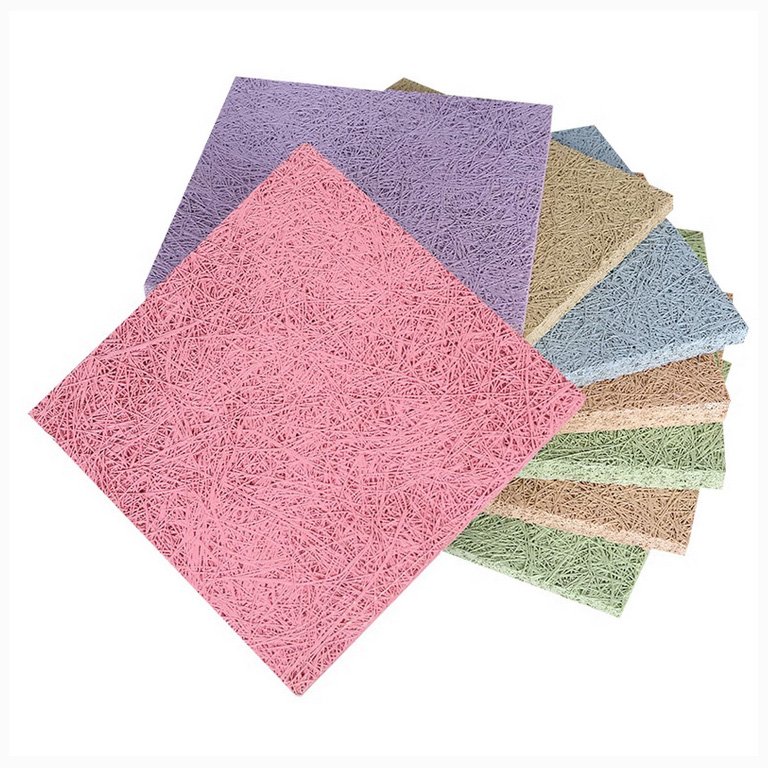
II. Understanding Woodwool Ceiling
Woodwool ceiling (commonly referred to as wood wool acoustic ceiling) is an effective and cost-efficient method for noise reduction in various environments. Composed from wood fibers bound together by cement, this resilient material features excellent acoustic properties.
Wood wool board ceiling stands out as an effective noise absorption option thanks to its natural sound absorbers, the wood fibers in its boards. Wood wool is ideal for spaces requiring sound control as its sound-absorption capabilities help minimize sound waves while also limiting excessive reverberation and echo effects.
Decorative ceiling sheets made of wood wool can also help to minimize echo and reverberation, creating a more pleasant and acoustically balanced environment – especially helpful in spaces such as auditoriums, theaters and conference rooms, where clear and intelligible sound quality are essential components.
Wood wool ceiling offers outstanding thermal insulation properties that help regulate temperature and reduce energy usage, contributing to both a comfortable indoor environment as well as significant cost savings in heating and cooling costs.
In the following section, we will explore the specific benefits of wood wool false ceiling 600×600 in noise reduction and how it can be implemented across different environments.

III. Benefits of Woodwool Ceiling in Noise Reduction
Woodwool false ceiling cladding offers many advantages when it comes to noise reduction, including:
Enhanced sound absorption capabilities
Woodwool ceiling’s sound absorption capabilities have been optimized, making it particularly suitable for environments requiring noise control like offices, classrooms and healthcare facilities. Wood fibers present in boards trap and dissipate sound energy to reduce overall noise levels in any given space – something woodwool ceiling excels at doing. It makes this material particularly valuable.
Reducing Reverberation and Echo
Intense reverberation and echo can create a disconcerting and uncomfortable acoustic environment, but woodwool ceiling can help reduce these problems by absorbing sound reflections that would otherwise bounce around a room, thus producing clearer speech, improved music quality, and an overall more pleasant auditory experience.
Enhanced Acoustics in Different Environments
Mounting acoustic panels to ceiling is an adaptable solution that can be applied in numerous settings, be they theater, gymnasium, restaurant or residential. Woodwool contributes to better acoustics by reducing background noise levels, improving speech intelligibility and creating a balanced sound environment to ensure intended sounds can be heard without interference or distortion.

IV. Applications of Woodwool Ceiling
Woodwool timber ceiling installation offers numerous uses that provide both functional and aesthetic advantages. Below are a few common applications:
Decorative Ceiling Sheets to Add Visual Appeal
Woodwool ceiling is available in numerous designs and finishes to provide aesthetic ceiling installations with creative designs and visually appealing installations. Adding warmth and natural beauty to any space, it has quickly become a preferred choice of architects and interior designers searching for an aesthetically pleasing acoustic solution.
Woolwool Ceiling as False Cladding for Seamless Integration
Wood wool can be suspended below a structural ceiling for easy false ceiling installation, providing seamless integration of lighting fixtures, AC vents and other utilities while offering excellent noise reduction properties. Using woodwool boards ensures an attractive acoustic solution that also addresses aesthetic considerations.
Mounting Acoustic Panels to the Ceiling for Additional Absorption
In spaces requiring additional sound absorption, woodenwool ceiling can be supplemented with mounted acoustic panels strategically arranged on the ceiling to further increase noise reduction and overall acoustics improvement – providing an effective sound control solution. This combination offers comprehensive sound management.
Next, we will delve into the installation and maintenance aspects of wood wool boards ceiling, in order to ensure long-term performance.

Wood Wool Slabs | Acoustic Woodwool Slabs
Wood wool slabs are not just firerpoof, they have a very good sound absorption performance because the open surface structure allows a high level of absorption.
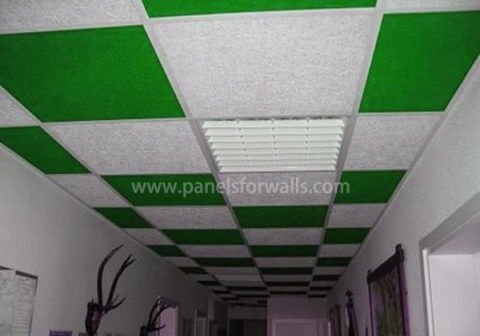
Wood Cement Board | Wood Wool Cement Fiber Panels
Wood wool cement fiber panels or wood cement board is a decorative panel composed of long wood fiber and cement, which is stabilized by chemical impregnation.
V. Installation and Maintenance
Installing a woodwool ceiling requires careful consideration to ensure its effectiveness in noise reduction. Here are the steps involved in its installation process:
- Preparation: To start off the installation of your acoustical tiles ceiling, start by measuring its area of installation. Ensure the surface is free from debris and clean before you begin installing your wooden wool. Having a solid and level foundation for installation will ensure a successful result.
- Framework: To support the woodwool ceiling boards, create a framework from metal channels or wooden battens using proper alignment and secure attachment to your ceiling. The framework should then be properly secured against it.
- Board Installation: Begin board installation by positioning a woodwool board at one end of your framework using appropriate screws or nails to secure it to its spot. Continue assembling remaining boards until all fit snugly without gaps between them.
- Finishing: Once all the sound absorbing panels for ceiling have been installed, inspect the ceiling carefully for any imperfections or loose boards, making any necessary adjustments or repairs to ensure an appealing and professional finish.
Tips for proper maintenance and cleaning of Woodwool ceiling:
- Regular Dusting: Dust accumulation on the surface of wood wool tiles ceiling can drastically diminish its acoustic performance. Ensure regular dusting using either a soft brush or vacuum cleaner equipped with a brush attachment in order to remove any loose particles that accumulate on them.
- Gentle Cleansing: For more thorough theater acoustic ceiling cleaning, if any is necessary, try using a damp cloth or sponge dampened with mild soapy water, or an acoustic panel cleaner designed to clean it instead of harsh cleaning agents that could potentially harm its surface.
- Avoid Excessive Moisture: The acoustical ceiling panel is unsuited to environments with high humidity or moisture levels, such as bathrooms or swimming pool enclosures, where excess moisture could warp the boards over time or cause warping or degradation to occur.
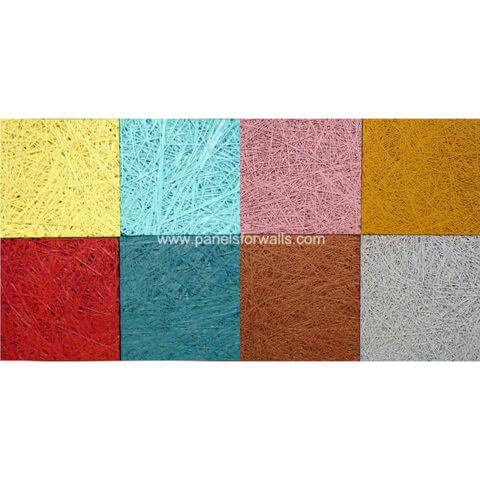
Wood Fiber Panels | Painted Wood Fiber Acoustic Panels
Wood Fibre Insulation Boards | Wood Fiber Acoustic Ceiling Tiles Wood Fibre Insulation Board Wood Fiber Board
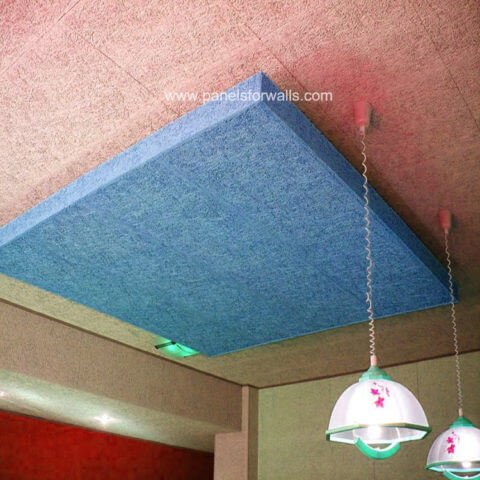
Acoustic Wood Clouds Factory | Wood Wool Ceiling Panels
Factory Wood Wool Slabs Problems |Wood Wool Sound Absorption Acoustic Wool Panels Acoustic Wood Wool Ceiling
VI. Case Studies
Real-life examples of woodwool ceiling installations demonstrate their positive effect on noise reduction in various spaces. Here are a few notable case studies:
- Theaters: Woodwool ceilings have become a great solution to improve acoustics and increase audience experience in theaters. Their sound-absorbing properties enable clearer sound projection, reduced echo levels, and provide optimal audio quality during performances.
- Gyms: Gyms can generate high volumes of noise due to heavy equipment use and intense workout sessions, so gymnasium acoustical ceiling panel has been implemented into these facilities to minimize sound levels for greater comfort and focus for users.
- Offices: Open-plan offices can become increasingly noisy over time, leading to decreased productivity and concentration levels. Woodwool ceiling installations in office spaces have proven highly effective at reducing noise distractions for a quieter work environment.
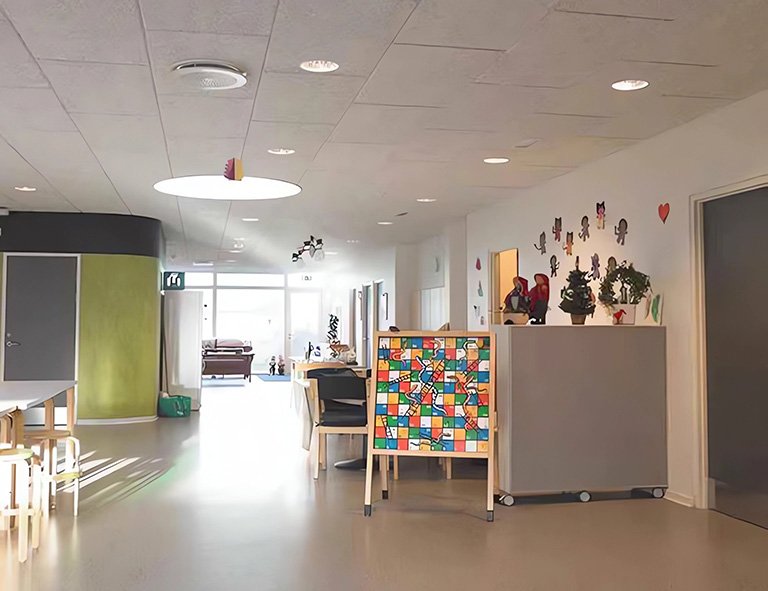
These case studies showcase the versatility and effectiveness of woodwool ceilings in different settings. In the next section, we will investigate customization and design options available for wood wool ceilings to offer tailored solutions tailored specifically to meet individual requirements.
VII. Conclusion
Woodwool ceiling offers numerous advantages when it comes to noise reduction, making it a suitable solution for various spaces. Let’s review its advantages and encourage readers to consider woodwool for their acoustic needs.
Sound absorbing ceiling board and wood hex tile provide superior sound absorption capabilities, helping reduce noise levels and creating a peaceful environment. It effectively prevents reverberation and echo, providing clear intelligible audio in spaces such as theaters, gyms and offices – contributing to more comfortable and productive working conditions.
Wood wool ceiling offers flexibility in its applications as you can custom acoustical ceiling panels. It can be used as decorative ceiling sheets to add aesthetic charm and utility integration. False ceiling cladding helps hide utility wiring, while mounting acoustic panels on the ceiling provides extra sound absorption.
Acoustic woodwool ceiling installation and maintenance require careful consideration and regular attention for optimal long-term performance. By following proper techniques of installation and performing routine maintenance checks, the woodwool ceiling can continue to offer effective noise reduction for many years to come.
Woodwool ceiling is an effective and cost-efficient method of noise reduction in various environments, offering advantages like its sound absorption properties and benefits that make it invaluable in theaters, gymnasiums, offices or any other setting where acoustic control is a top priority. Wood wool can enhance any acoustic experience significantly.
The suspended ceiling solutions may provide the solution you’ve been searching for to enhance sound quality, reduce noise disturbances and create a more enjoyable environment. Discover all of its customization possibilities before consulting with professionals about finding what best meets your acoustical requirements.










